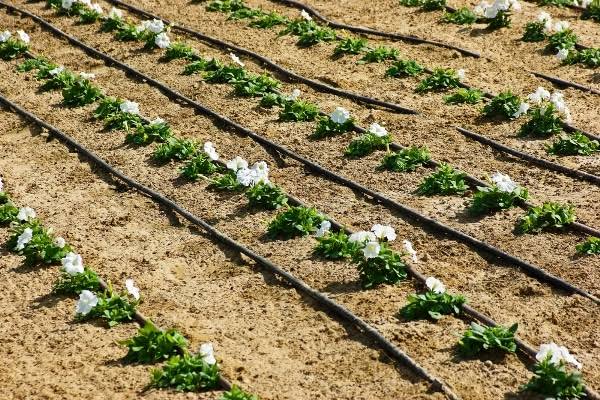
A spice is a seed, fruit, root, bark or other plant substances used mainly for flavoring, coloring or extending the shelf-life of food whereas herbs are plants with savory or aromatic properties that are used for flavoring and garnishing food, medicinal purposes, or for fragrances.
There are many spices and herbs on the market. However, some of the common natural spices are turmeric, cinnamon, rosemary, garlic and ginger. Largely, due to their health benefits, herbs and spices are getting more popular for growing on both a household level and commercially.
Try to consider these tips when creating your very own spice and herb garden!
Drainage
In general, most plants require good drainage to thrive to their fullest potential. Herbs require well-drained soil so that the water does not begin to pool at the top, negatively affecting the plants. You can layer the bottom of your garden bed with gravel then add loose well-composted soil on top to allow for ideal drainage.
Complimentary Planting
When you are trying to decide on what to plant in your garden, be sure to remember that not all plants get along with each other. Planting herbs that complement each other next to one another can provide the best results for growth. Try combinations like:
- Parsley & Basil
- Rosemary & Sage
- Oregano & Thyme
Spacing and Labeling
When planting your herbs and spices, be aware of the correct spacing that each seed or plant requires. Taking a look at the recommendations on the seed packets is a great way to determine how far apart and deep the seeds should be planted. Labeling plants with ready-made plant labels or wooden stakes is also a good trick to remind you what was planted.
Water the plants
Depending on the type of pot or bed that your herbs are in, moisture levels can vary. If your plants are in container pots, they become thirstier than ones that are planted in the ground. A good way of determining whether your plants are thirsty is checking if the soil feels dry an inch below the surface. In addition, always be sure to keep the soil moist but never damp.
Sunlight
Herbs and spices usually require plenty of sunlight exposure to be able to grow and can need anywhere from 5-6 hours daily. Although some plants can vary in how much sunlight they need. Checking the back of the seed packets, or the plant labels, will give you a sure sign of what each herb needs.
How to irrigate your herbs and spices
Micro-irrigation happens to be one of the most well-organized water and nutrient delivery systems for growing herbs and spices. It delivers water and nutrients directly to the plant’s root zone, in the right amount, at the right time, so that each plant gets exactly what it needs, at the right time, to thrive optimally. With micro-irrigation, farmers can achieve higher yields while saving water, fertilizers, energy, and even crop protection products.
How does it work?
Water and nutrients are delivered to the field in pipes called “drip system lines” containing smaller units called “drip systems.” Each drip system emits drops containing water and fertilizer, which allows a uniform application of water and nutrients directly to the root zone of each plant over an entire field.
Benefits of using drip irrigation in herbs and spices
- Useful in areas where water availability is a major problem.
- Increase in yield and early maturity of herbs and spices can be expected.
- Reduces fertilizer/nutrient loss due to localized application.
- Make use of water in a highly efficient way.
- Drip irrigation makes intercultural operations easy.
- Water distribution is done uniformly and directly to the plant root zone.
- Controls weed growth and soil erosion.
- Land/fields with irregular shapes can utilize drip systems very effectively.
- Recycling of waste water can be used without any issue through sub-surface irrigation.
- Can save the labour cost when compared to other irrigation methods.
- Reduces the risk of plant and soil borne diseases.
- It can be operated at lower pressure which may reduce energy consumption cost.
- There is no need of leveling the land to be cultivated.
- Because of uniform distribution of water, the plant root zone can be maintained with constant moisture capacity.
- Fertigation (Pumping the fertilizer along with irrigated water through drip system) can be done with minimal waste of fertilizers/micronutrients.
- Water output variation can be controlled very easily by operating valves and drippers.
- Due to the drip system, soil type plays minimal role in frequency of irrigation.
- Ultimately, the drip system saves time and money.
Spice and herb gardens can be great additions to your home. Having plants like fresh Basil, Lavender, Parsley, Sage, and Rosemary brought from your garden right to your kitchen can provide you with flavorful spices and herbs for recipes and can even double as relaxing aromatherapy. For these crops to grow well, a farmer has to put the factors we mentioned above into consideration, water being on the forefront. For any inquiry on drip irrigation systems, engage Mazero Agrifood on 0729777711.

